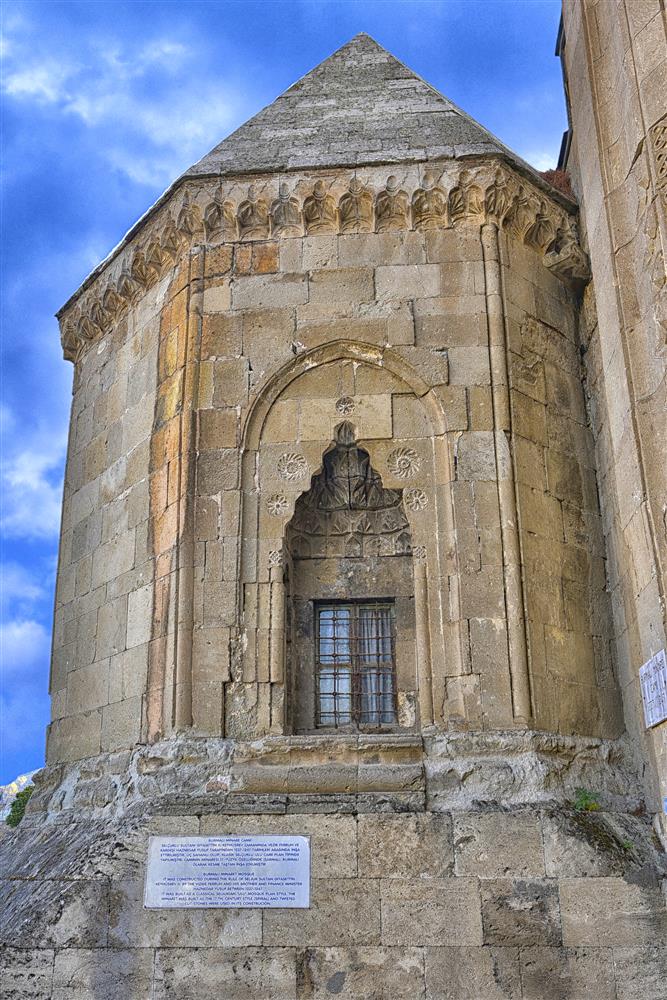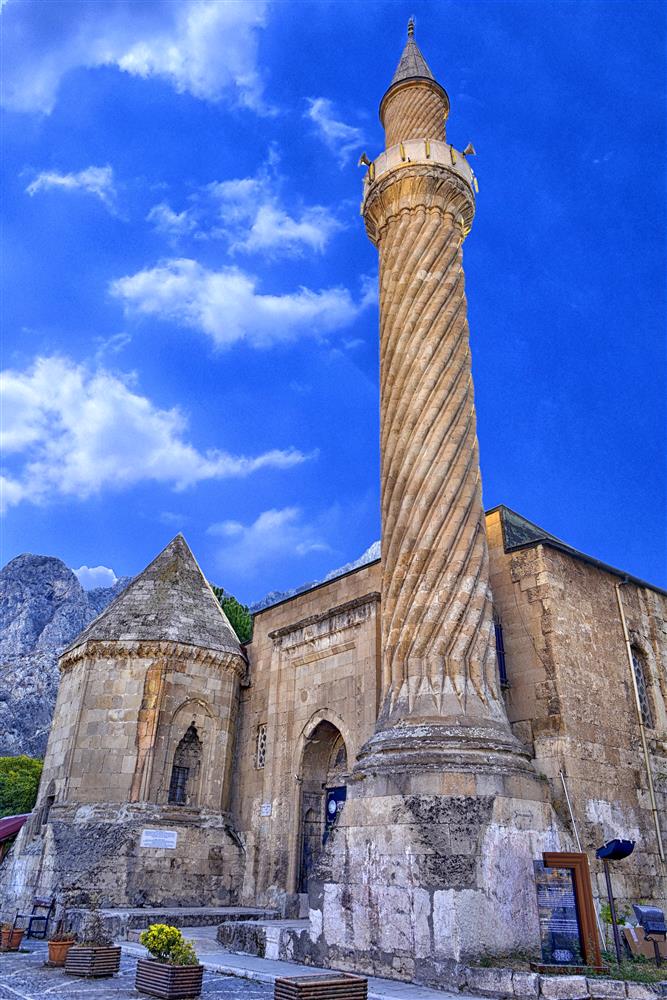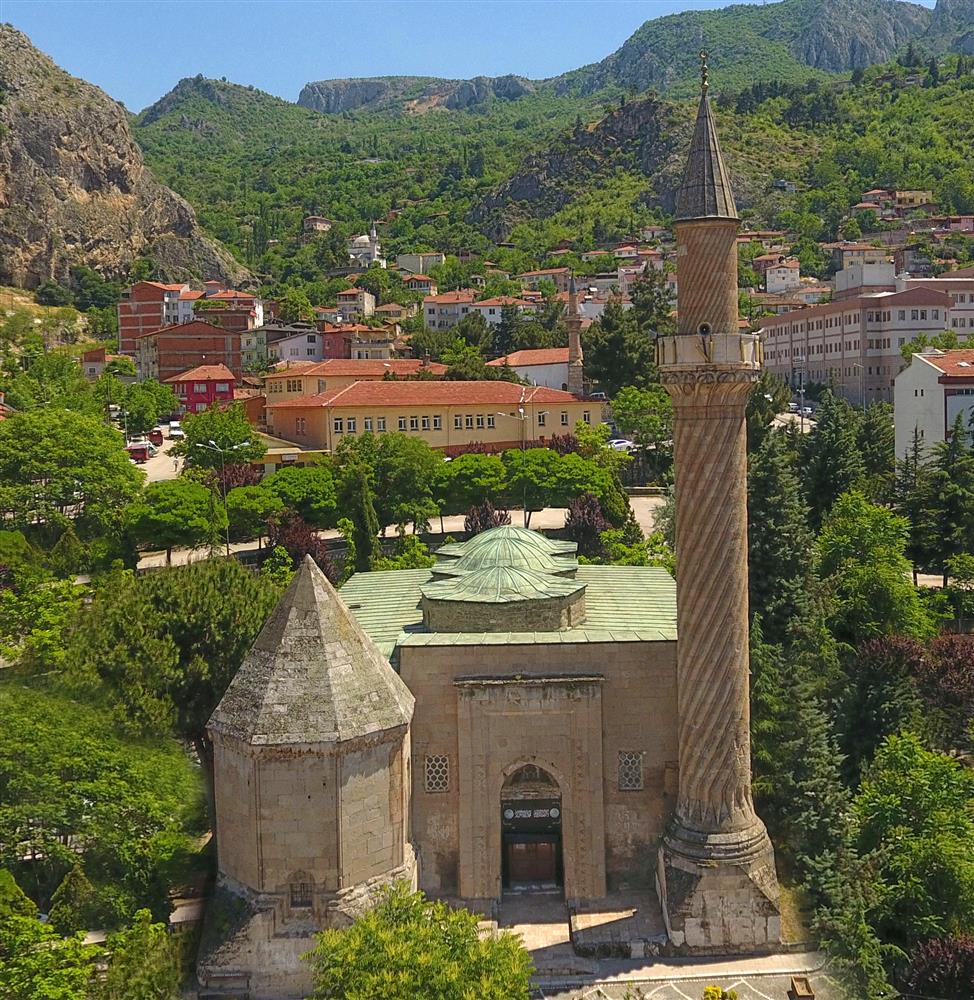Burmalı (Twisted) Minaret Mosque
Burmalı (Twisted) Minaret Mosque
Thanks to the arch shaped epigraph over the entrance, the mosque is known to have been built by two brothers. Of these brothers, Said Ferruh is generally accepted to be Necmeddin Ferruh Bey, one of the viziers of Seljuk Sultan Gıyaseddin Keyhüsrev II. His brother is Haznedar Yusuf. The construction of the mosque is generally dated to sometime between 1237 and 1244.
The mosque, referred to as the Mahkeme Mosque by Evliya Çelebi in his Book of Travels, was named after its originally wooden minaret. The minaret, damaged by the earthquake in 1590 and the fire in 1602, was totally burnt down in the devastating fire of 1730. The minaret built in its stead was built of stone to match the strong stone structure of the mosque. The minaret and the mosque, characterized by the stria entwining the former, have thereafter been called Burmalı Minaret and Burmalı Minare Mosque respectively.
The mosque has a rather regular rectangular plan disregarding the minaret and the tomb. The inside is illuminated by four windows on both east and west walls and three more windows on the south wall. All the
walls are thick and strong and built of hewn stones. The entrance to the mosque is between the minaret and the tomb, through an arched doorway placed in a large protruding niche. The inner space is divided into three landings by three pillars on both sides of the axis of the shrine. By adjoining each pillar with lancet arches, all the landings are divided into three, creating a total of nine compartments. The three compartments in the middle row have a dome over them. The two platforms by the kiblah wall are covered with cross vaults, whereas the others are covered with barrel vaults.




